The device and principle of operation of the split system
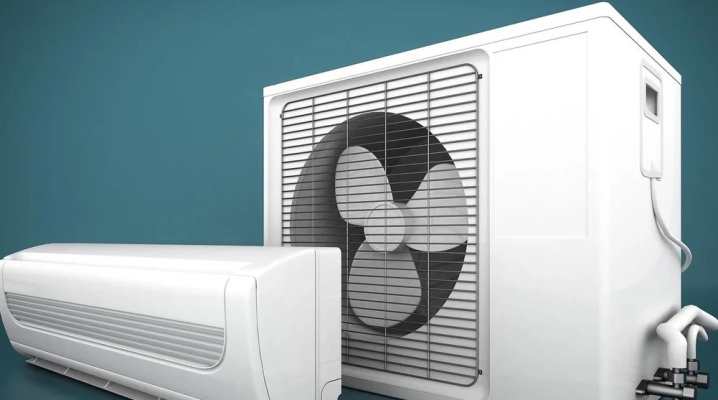
Among the air conditioners of all types, once developed and known to the consumer, the split system is in the greatest demand. It is the most energy efficient and quietest (indoor). In everyday life, it replaced much more noisy window air conditioners.
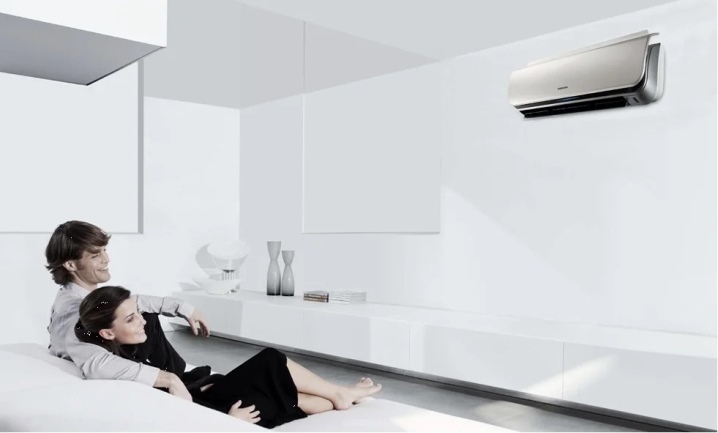
Components
A split system is an outdoor and indoor unit, separated from each other by the outer wall of a building or structure. The standard equipment of the air conditioning units is a compressor, condenser, evaporator, expansion valve and two fans.
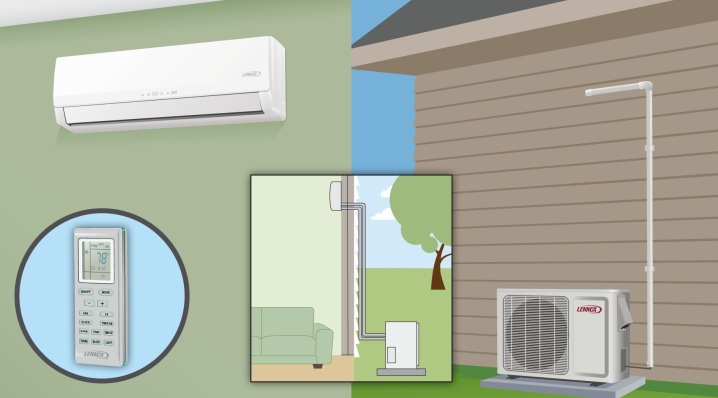
Compressor
A compressor is a motor that drives refrigerant along the refrigeration coil in the outdoor and indoor units. Its mechanism, enclosed in a housing impermeable to external air and water vapor, also has a reservoir in which engine oil is poured, which reduces the friction of its parts and reduces engine wear by hundreds of times. A distinction is made between compressors built on a piston or scrolling (scroll) basis. Piston compressors cost significantly less than scroll compressors. Their reliability is several times lower - especially at temperatures down to -20 degrees.

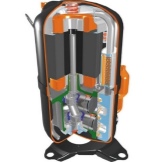


Capacitor
The freon condenser includes a coil with a radiator, where the liquefied freon gives off heat to it, which is then removed using a fan. A condenser is also called a radiator, on which water vapor is converted from blowing air into water droplets. The water collects in the tank and then flows out through a hose outside the outdoor unit.
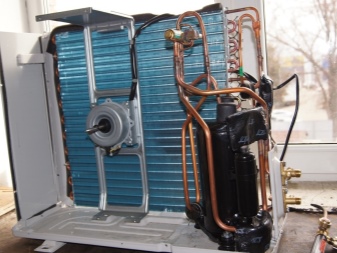
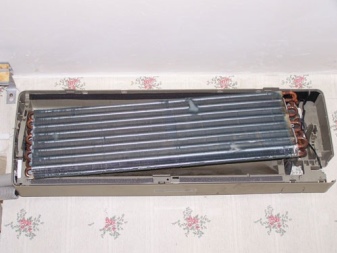
Evaporator
The evaporator block kit includes a coil and a radiator for the indoor unit. In it, liquid freon turns into gaseous, it takes heat with it from the room. In return, it gives off cold, which is blown out with the help of a fan from the radiator fins that have become ice.

TRV
The heat expansion valve or four-way valve allows the air conditioner to switch from cooling to heating and vice versa. Wherein the direction of movement of freon is reversed.

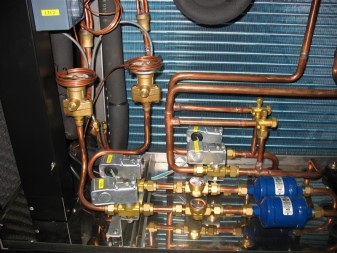
Fans
If it were not for the fans, heat removal from the coil radiator and compressor of the outdoor unit - as well as the cold from the indoor unit - would be extremely slow and inefficient. In the best case, the air conditioner would often stop, which would be monitored by the automation. At worst, it would quickly fail due to overheating of the compressor and covering one of the pipes of the freon heating main with a snow coat. The outdoor unit fan removes excess heat from the outdoor unit. In the indoor unit, the fan blows the cold formed on the radiator into the room itself.
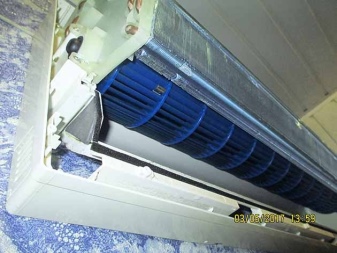

Other parts and assemblies
In addition to the motor-compressor, coils with radiators, fans and expansion valves, electromechanical control based on thermostats, relays and the simplest transistor keys was built into the old Soviet and Russian window air conditioners. As with older refrigerators 20 years old or more, electromechanics controlled the load on the fans and compressor., not allowing them to process more than they should - and at the same time overheat.

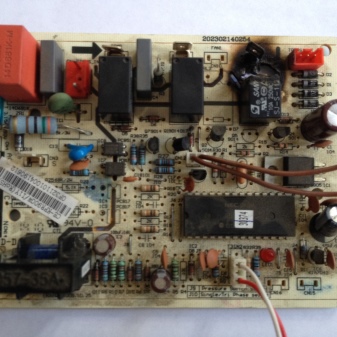
Electronic control board
In modern air conditioners, instead of relays, powerful diodes and transistors, an electronic control board is used on modern open-frame microassemblies. It differs from the electromechanical module in the presence of a processor. From the microchip (read only memory, ROM) through the random access memory, it reads the program "sewn" into the ROM chip. The latter not only prevents overloading of the main units vital for the air conditioner, but also allows it to operate in several modes. This makes it possible for the consumer to adjust the operation of the air conditioner to suit his needs in a few seconds.
The board (electronic control unit, ECU) is also equipped with powerful, but compact switching relays (or power transistor switches) that turn on and off the fans and the compressor after the time intervals specified in the program description. The board itself is powered from a constant voltage of 12 volts, into which an alternating mains voltage of 220 V is converted using a transformer power supply.
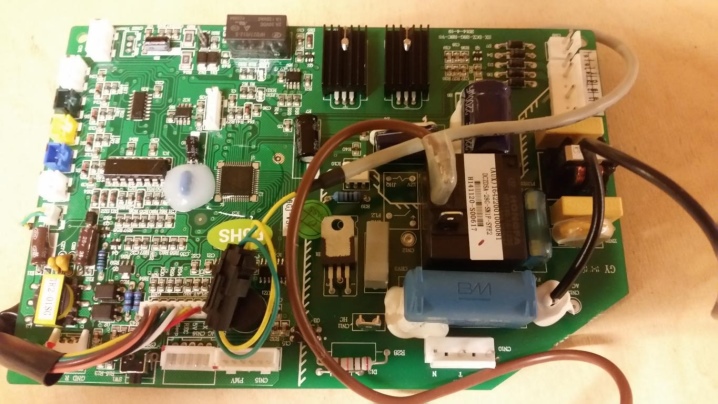
Indoor unit blinds
The blinds of the blinds of the indoor unit are lowered and raised by a stepping variable motor connected to them using a long (almost like the indoor unit itself) axis. It is controlled by a driver - a separate mini-board that receives current from the power supply. It converts this voltage into alternating current pulses - in the number of phases equal to the number of the coil windings of the motor themselves, and provides (with its help) the rotation of the shutters around its axis at the desired angle.
The program has a "swinging curtains" mode - with it, the driver board and the motor work almost constantly, making these curtains wiggle, like the translational turns of a conventional room fan. The task is to make the cooling air flow through the room more uniform and dispersed. This saves the owner or his guests from the risk of getting colds and other diseases caused by cold air outflow targeting the same parts of the body.
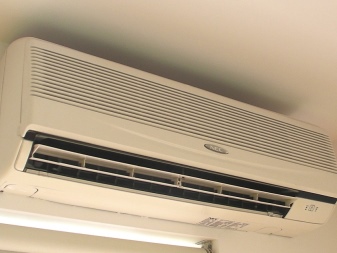
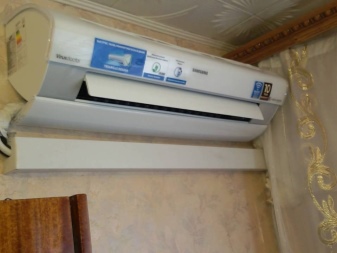
Thermal sensors
One of the thermistors is located on the indoor unit - at the inlet of the air drawn into the unit itself. It informs the control board about the actual room temperature. The second one is on the compressor: in case of overheating of a dusty and dirty compressor outside, the air conditioner will automatically stop - and will start only after the motor has completely or partially cooled down. Or the device will turn off until the owner turns on the air conditioner again.
On other engines (fans, a slider for turning the blinds), temperature sensors are also installed when the air conditioner model is one of the most expensive. When the engine overheats, constantly swinging blinds - or a dusty fan of the outdoor unit - the air conditioner immediately stops working.
Such an "advanced" scheme - like the thermal protection of a laptop, refrigerator or other "smart" device - completely takes on preliminary diagnostics. It protects the air conditioner from complete damage caused by a single (local) error in its operation. Prices for "smart" split systems are gradually decreasing.
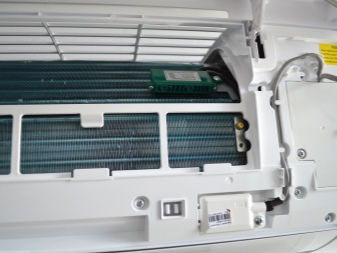
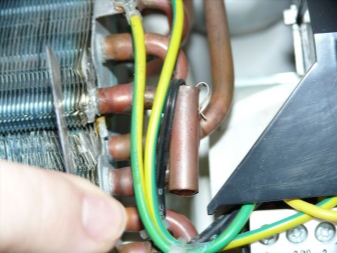
Display module
It includes an LED panel and / or a small display. In models of wall-mounted split systems, these are, as a rule, LEDs showing how the air conditioner works - "Network", "Cooling", "Heating", "Drying", "Ionization", "Error" (or "Alarm"), LEDs for indicating the temperature (if it is adjusted step by step, and not with an accuracy of a degree). In advanced models, the LED row replaces a backlit display showing temperature, mode, load level and other useful diagnostic data (if something goes wrong).

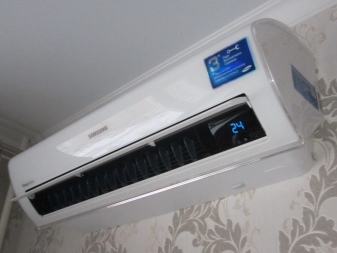
Control
Low-budget models, like window air conditioners from the recent past, have a power switch and a step switch for several positions. The latter can have the positions "Low cold", "High cold", "Ventilation" and "Heating". Instead of switches, buttons can be present - like on a remote control. The advantage of this method is ease of management.The disadvantage is that you need to get up again to press buttons or turn the switch handle, which is not always pleasant for the elderly or sick people. More expensive models are controlled from the remote control.
The disadvantage of remote switching of modes is that once a year the batteries in the remote control need to be changed. Advantage - dozens of auxiliary modes, for example, lowering the fan speed of the indoor unit at night.
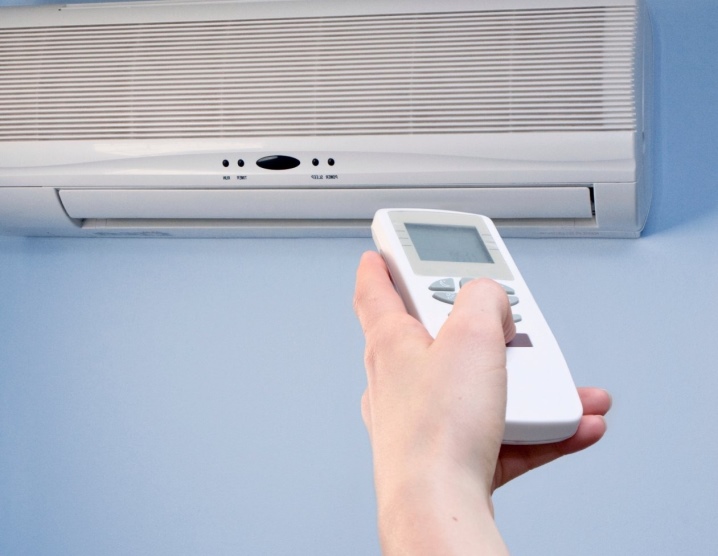
Main functions
The main function of the air conditioner is to cool the air in the rooms in the summer heat. Modern air conditioners have also acquired additional features such as:
- heating air in rooms in winter;
- cleaning the air in the room from dust, removing odors (using fine carbon filters);
- aeroionization (enrichment of the air in the room with negative ions beneficial to health);
- drying too humid air.
In the most advanced models of air conditioners, they began to build in a mini-ozonator - a multiplier circuit for generating static electricity, generating 60-80 kilovolts. Under the influence of a corona discharge, free oxygen in the room is converted into ozone, which is useful for humans in small quantities. The ozonator can also be turned on and off by software.
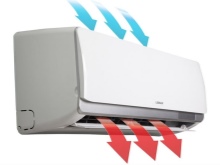

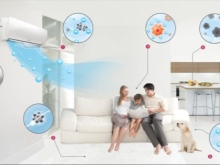
Modes of operation
Combined operating modes the best and most expensive split air conditioners have the following:
- cooling with low fan speed ("low cold");
- air cooling and drying;
- heating and drying;
- cooling with air ionization;
- cooling, aeroionization and ozonation;
- cooling and ozonation.
Manufacturers rarely combine, for example, drying, heating and ionization. The list of modes can be more than a dozen - they are all switched using the remote control.
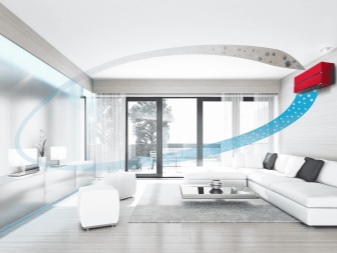
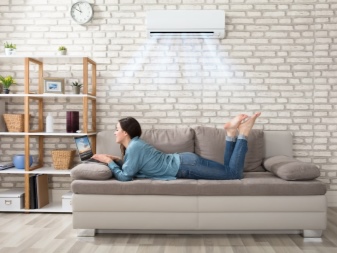
Operating principle
The cycle of any air conditioner several steps are included.
- Gaseous freon is supplied to the compressor from the indoor unit, compressed to only 3-5 atmospheres. Freon pressure should be up to 20 atmospheres, so it is brought to a liquid state, in which the refrigerant enters the external coil. Here, the heat of the freon is already being transferred to the radiator of the circuit itself. Excess heat is immediately blown off by the fan of the outdoor unit into the atmosphere.
- The liquefied freon cooled down in the circuit reaches the heat regulating valve, from where it goes into a smaller tube and goes to the indoor unit with a temperature of + 15– + 20 degrees. Copper, from which the tubes of freon lines and coils are made, conducts heat more actively than brass and steel. So that the cold is not lost, this tube is reliably insulated with foam rubber or foam foam, which does not conduct heat well.
- Having reached the indoor unit, the freon passes through the connection fitting and enters the coil with the radiator, similar to that in the outdoor unit. Freon evaporates and completely turns into a gaseous state, reducing its operating pressure to 3 atmospheres. The contour cools down to 0 degrees and below.
- The resulting cold is immediately blown into the room air by a fan that draws in warm air from the room through the inlet slots in the upper part of the indoor unit. From the ice radiator, air is blown into the room through other slots - it passes between the curtains of the blinds of the block. Its outlet temperature is 5-12 degrees Celsius.
- Throwing off the cold, freon bypasses the coil of the indoor unit, passes through its outlet fitting and rushes into a copper tube of a larger diameter - already in a gaseous state. And although the freon itself is heated due to the heat taken from the room, the manufacturer also recommends packing this tube in a heat insulator, not allowing the freon to heat up to the temperature of the heat of the street (up to +58) before it reaches the compressor inlet. This saves the resource of the compressor itself, which does not need to compress the overheated freon longer and up to 40 atmospheres. The consumer gets rid of the overspending of money for electricity.
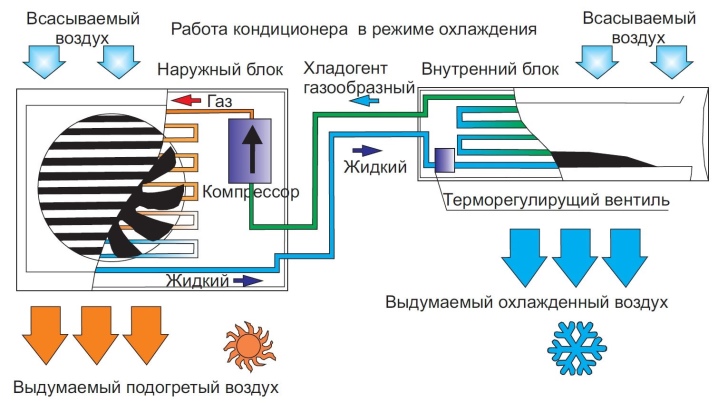
The nuances of various types of work
The split system is available in wall, duct, column, floor, multisplit and cassette-ceiling versions.The outdoor unit is common, the number of indoor units may vary. The most difficult of all options is a ducted air conditioner: it requires the installation of closed supply and exhaust ducts that are not connected to the street. A multisplit system needs a tree-like "track" - here the external block works for several internal ones. Column and floor air conditioners are placed on the floor in the corner, but the "track" is significantly lengthened - the outdoor unit cannot be hung at a height of less than 2.5 m.
However, all split systems work the same way.
The principle of operation of a design of any type is similar. In summer, the indoor unit freezes, the outdoor unit dumps its heat outside the building or structure. Models equipped with outdoor air intake are rare.

Next, watch a video about the device and the principle of operation of the split system.













The comment was sent successfully.